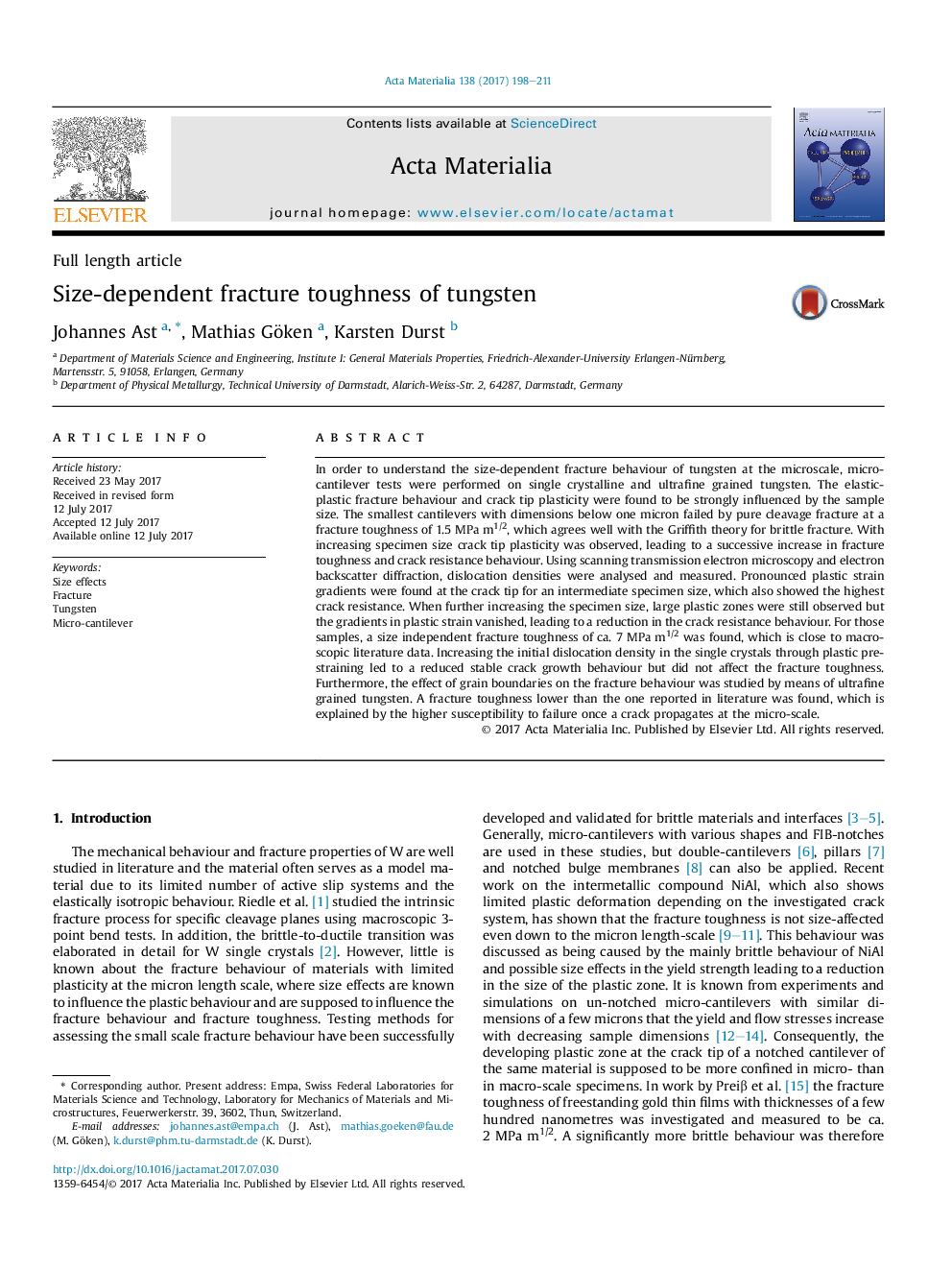| Article ID | Journal | Published Year | Pages | File Type |
|---|---|---|---|---|
| 5435952 | Acta Materialia | 2017 | 14 Pages |
In order to understand the size-dependent fracture behaviour of tungsten at the microscale, micro-cantilever tests were performed on single crystalline and ultrafine grained tungsten. The elastic-plastic fracture behaviour and crack tip plasticity were found to be strongly influenced by the sample size. The smallest cantilevers with dimensions below one micron failed by pure cleavage fracture at a fracture toughness of 1.5 MPa m1/2, which agrees well with the Griffith theory for brittle fracture. With increasing specimen size crack tip plasticity was observed, leading to a successive increase in fracture toughness and crack resistance behaviour. Using scanning transmission electron microscopy and electron backscatter diffraction, dislocation densities were analysed and measured. Pronounced plastic strain gradients were found at the crack tip for an intermediate specimen size, which also showed the highest crack resistance. When further increasing the specimen size, large plastic zones were still observed but the gradients in plastic strain vanished, leading to a reduction in the crack resistance behaviour. For those samples, a size independent fracture toughness of ca. 7 MPa m1/2 was found, which is close to macroscopic literature data. Increasing the initial dislocation density in the single crystals through plastic pre-straining led to a reduced stable crack growth behaviour but did not affect the fracture toughness. Furthermore, the effect of grain boundaries on the fracture behaviour was studied by means of ultrafine grained tungsten. A fracture toughness lower than the one reported in literature was found, which is explained by the higher susceptibility to failure once a crack propagates at the micro-scale.
Graphical abstractDownload high-res image (235KB)Download full-size image
